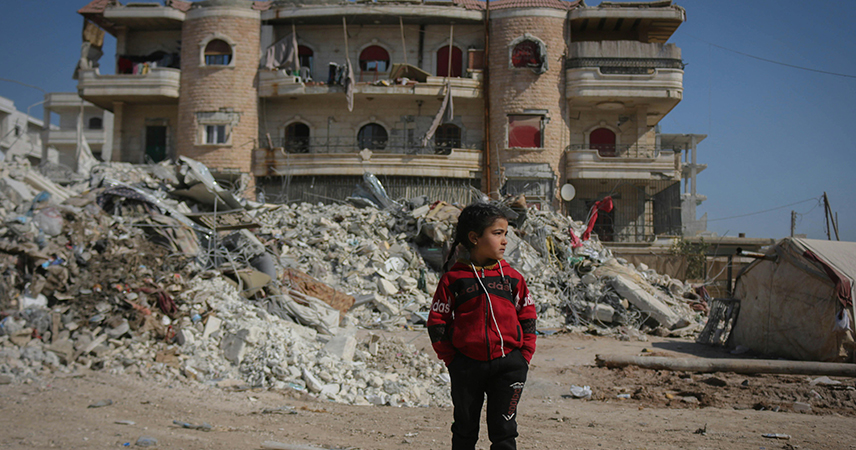The Arab world enters 2025 at a delicate crossroads, where promising opportunities intersect with escalating threats. Recent events reshape regional priorities: the escalation in Gaza, ongoing attempts to establish a permanent ceasefire after over a year of conflict, persistent turmoil in Sudan, and political shifts in Syria following the fall of Bashar al-Assad's regime present complex challenges. These developments, coupled with pressing social and economic issues in many Arab countries, offer both significant opportunities and considerable challenges.
Opportunities and Threats in the Region’s Political Landscape
The region has a chance to rebuild alliances after years of major crises. Strengthened ties between Arab and Gulf states, alongside normalization agreements between countries like Saudi Arabia and Iran, offer a foundation for greater political stability and shared security. The conflict in Gaza might become a turning point, pushing for a comprehensive political settlement that could encourage diplomatic solutions to end violence and achieve lasting stability.
The weakening of armed factions such as Hezbollah and Hamas has created space for diplomatic negotiations that better represent the interests of the people. Reconstruction efforts in Gaza, Syria, and Lebanon further present a unique opportunity for regional cooperation. Recent developments, including the ceasefire in Gaza, the fall of Bashar al-Assad, and the election of Joseph Aoun as Lebanon's president, open new possibilities for rebuilding these devastated areas, fostering economic recovery, and strengthening international and regional partnerships.
Despite the opportunities present, political threats remain pervasive in the Arab world. The ongoing conflict in Gaza continues to test the region's ability to address major crises. While mediation efforts by Egypt, Qatar, and other nations have achieved some success, the devastation and loss of over 50,000 lives have left Gaza in ruins. Future escalation hinges on the implementation of agreements, leaving the region in a state of uncertainty.
Other conflicts further complicate the political landscape. Sudan remains a humanitarian disaster, with millions suffering from hunger and displacement, while diplomatic efforts to resolve clashes between rival factions prove futile. In Yemen, the Houthi threat to Red Sea navigation persists, undermining regional stability. Libya faces ongoing division despite a quieter phase, with its natural resources and neighboring nations under constant threat.
Syria also faces an uncertain future following the fall of Assad and the rise of Ahmad Al-Sharaa (formerly Abu Muhammad al-Julani). Significant concerns include the lack of guarantees against renewed conflict, the risk of authoritarianism, and challenges in managing diplomatic relations with neighboring countries and the global community.
Social Dynamics and Challenges
The Arab world holds immense potential for social transformation. With youth comprising more than half of the population, the region possesses a powerful driver for creativity and innovation. Investments in education and technology could lead to transformative progress. Efforts to empower women, particularly in Egypt, Saudi Arabia, and the UAE, have already contributed to social stability and economic diversification. Cultural heritage initiatives, alongside new visions in countries such as Egypt and Saudi Arabia, are also enhancing the region's soft power and fostering unity.
However, the social fabric of the Arab world faces considerable strain. Conflicts in Sudan, Syria, Yemen, and Gaza have led to new waves of refugees, placing immense pressure on host countries such as Egypt, Jordan, and Lebanon. High youth unemployment remains a persistent issue, fueling frustration and driving irregular migration. Sectarian divisions in Iraq and Lebanon, exacerbated by external interference, continue to hinder national unity and pose a serious challenge to social cohesion.
Economic Opportunities and Challenges
The Arab world presents vast economic opportunities. Investments in renewable energy projects, including solar and hydrogen initiatives, position the region as a leader in the global transition to a low-carbon economy. Its strategic geographic location as a trade hub connecting Asia, Africa, and Europe further enhances its potential, with initiatives like China's Belt and Road project attracting significant investment. Reconstruction projects in Gaza, Syria, Yemen, and Libya offer opportunities for development, opening new markets for construction, financing, and technology.
Yet, economic challenges loom large. Poor economic planning in countries such as Sudan, Yemen, and Lebanon continues to hinder recovery efforts and deepen regional disparities. Climate change exacerbates food and agricultural insecurity, particularly in Iraq, Sudan, and Egypt. Moreover, the widening wealth gap between Gulf nations and poorer Arab states like Mauritania and Sudan threatens regional cohesion and stability.
The Shifting Dynamics of Global and Regional Relations
Global and regional relations play a crucial role in shaping the Arab world's future. Key players such as Israel, Turkey, and Iran continue to exert influence, often creating tensions. Recent agreements have the potential to reduce conflicts, but challenges in managing these relationships persist. The gradual withdrawal of the United States from the region necessitates stronger ties with emerging powers like China while avoiding overreliance on any single ally. Normalization agreements with Israel are reshaping regional dynamics, yet face widespread public opposition due to ongoing Israeli aggression in Palestine, Lebanon, and Syria.
In 2025, the Arab world stands at a pivotal moment. Transforming its many challenges into opportunities requires regional unity, investment in human capital, and the adoption of sustainable policies. Failure to address these issues risks perpetuating political, social, and economic crises. The region's greatest challenge lies in creating a shared vision that fosters cooperation, achieves social justice, and preserves national sovereignty in the face of external interference.


